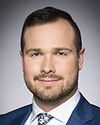We have two aspects there. One is the detectors that the researchers are interested in, and also the accelerator at CERN, the Large Hadron Collider. One of the aspects that TRIUMF is engaged in at the moment.... We secured $10 million to build components of the next generation of the LHC. It's what's called the high-luminosity upgrade to the accelerator itself. TRIUMF is ideally suited to provide those components, because we are world experts in what's called superconducting RF technology, which is used in these accelerators.
The contribution that we make to CERN as the accelerator is, in some sense, a gateway that we use to allow our researchers to engage in the science there as well. Canada is not a member of CERN, but it's associated with the research there, so by having this in-kind contribution to the accelerator, we make sure that Canadian scientists are more than welcome to utilize the facilities.
For the projects involving the detectors, we also act as a springboard, if you like, so that we are doing coordination work, but also using things like our detector technology team here in developing some of the techniques that might be used at CERN. That then becomes very collaborative with the university researchers.
There are two angles there. One is the detector and one is the accelerator itself.





